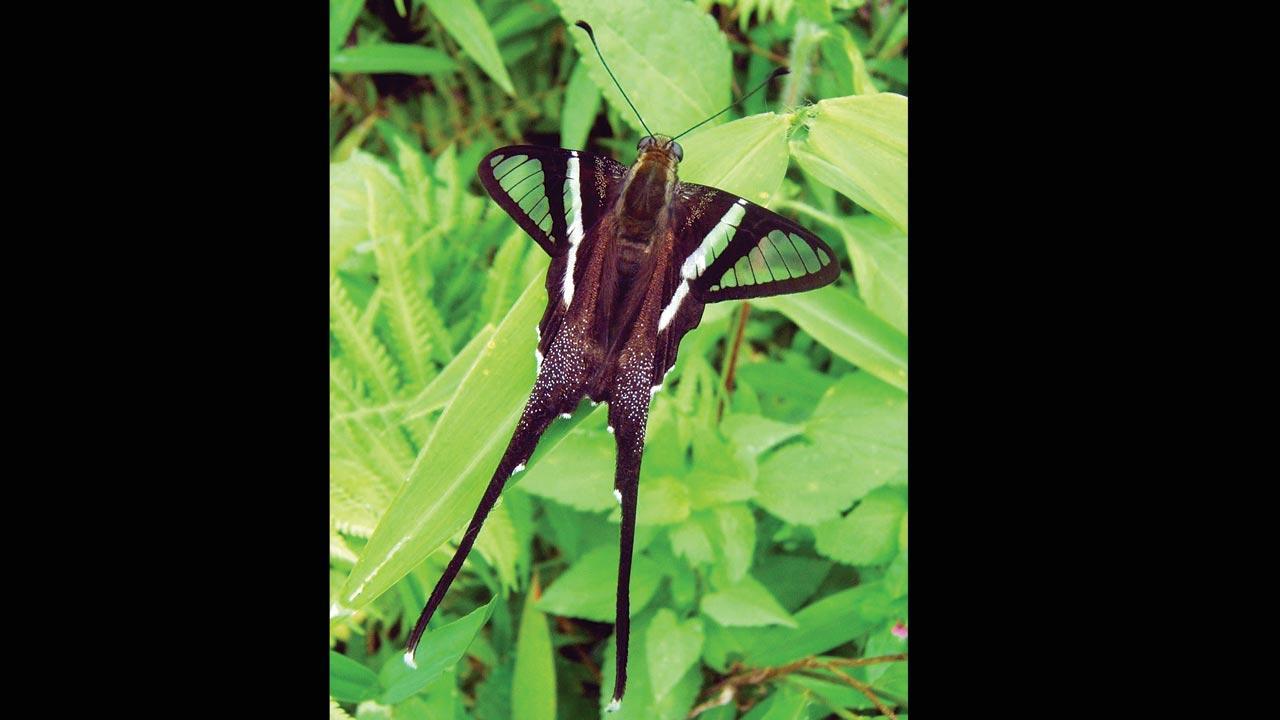There is an imminent threat to scores of butterfly species found in India. Experts discuss why it should matter to you that the titli survives

White Dragontail. Pic courtesy/Sohini Vanjari
Regal Apollo. Pic courtesy/Isaac Kehimkar
Healthy butterfly populations are indicators of improved environmental conditions. If butterflies were to go extinct, how would it impact us? “All the rare and endangered butterflies occur in rich natural habitats; these butterflies are certainly the flagships of those regions and indicate the good health of those habitats. But we need to ensure that butterfly populations around cities remain stable to indicate that the quality of the environment hasn’t dipped. For this, a good amount of greenery needs to be protected. It helps host wildlife, including butterflies. Butterflies are extremely sensitive to the quality of the environment. Their presence around us ensures our well-being,” says Isaac Kehimkar, chairman and director of iNaturewatch Foundation,
Navi Mumbai.
From apples to coffee, many food crops also depend on butterflies for pollination. If we are to eat and drink, pollinators must survive. “Not many are aware that pollination of food crops is critical to food production for humans. After bees, butterflies come next in priority and fulfil the important task of pollination. That makes them useful insects,” Kehimkar adds.
Isaac Kehimkar
Abhinav Mathur, CEO of Something’s Brewing, a coffee company, agrees, explaining that the presence of butterflies at a coffee plantation is a sure indicator of sustainable growing practices. “Any depletion of the butterfly population in a habitat is an early indicator of declining biodiversity and will have disastrous consequences, both for the coffee plantations and the overall flora and fauna of the region over time.”
Thankfully, the 165 species spotted in and around Mumbai are not yet under threat. Sachin Rane, who is associated with Wildnest, an outfit that organises nature tours, explains, “I study the host plants of butterflies, and as per my knowledge, they are not critically endangered yet. However, due to climate change and deforestation, a lot of species in remote areas are going extinct. Some species are even poached and sold outside the country.” This makes it critical to raise awareness around butterfly protection.
Sanjay Sodhi of Titli Trust, a Dehradun-based environment-focussed non-profit, says, “Protect habitats: forests in urban and rural regions. Reduce use of chemicals such as pesticides and chemical fertilisers. Stop the practice of compensatory plantations and commercial monocultures since these justify biodiversity reduction. In urban landscapes, ‘re-wild’ spaces, whether they are homes, offices or complexes, by planting native plant species. Native plants play wonderful hosts to butterfly larvae and nectarine species. We don’t need exotic plants, especially in gardens. Incentivise local communities to protect habitats by promoting nature-linked ecotourism, focussed on lesser-known fauna such as birds, butterflies and moths. This is already happening in many places such as Devalsari, Pawalgarh in Uttarakhand, Tale WLS, Pakke Tiger Reserve, Eaglenest WLS in Arunachal Pradesh, and the Garo Hills in Meghalaya.”
Butterflies play an important role in nature as pollinators and food for other creatures such as spiders, lizards, birds, dragonflies and mantids. If butterflies were to go extinct, it would cause a break in the chain of the web of life, eventually impacting humans too.
Host plants for butterflies
False Ashoka
Curry leaves
Custard apple
Castor
Calotropis
Cassia
Citrus
 Subscribe today by clicking the link and stay updated with the latest news!" Click here!
Subscribe today by clicking the link and stay updated with the latest news!" Click here!







_d.png)



